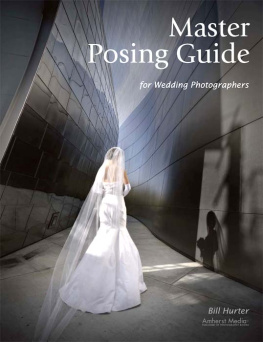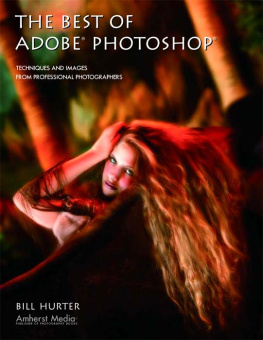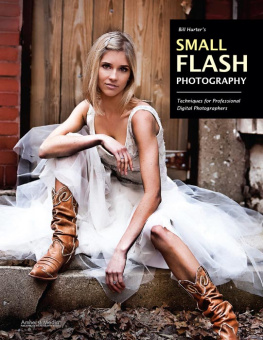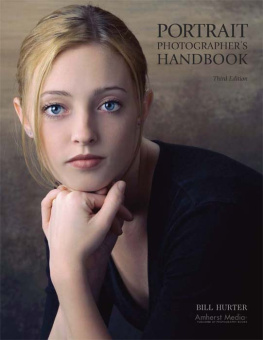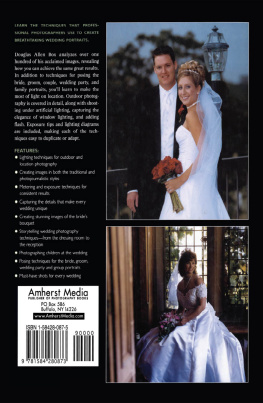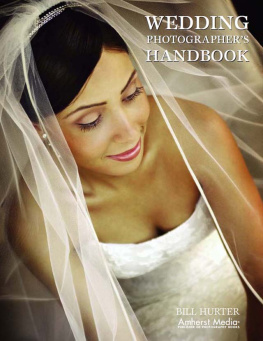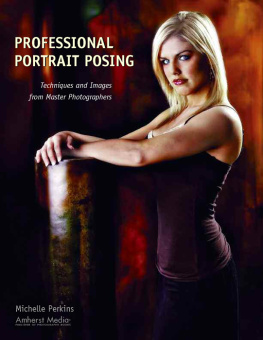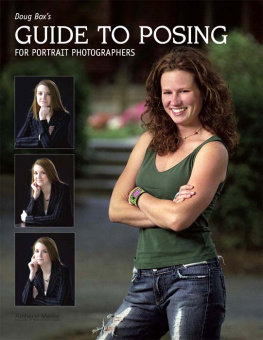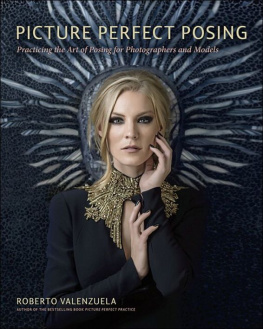Hurter - Master Posing Guide for Wedding Photographers
Here you can read online Hurter - Master Posing Guide for Wedding Photographers full text of the book (entire story) in english for free. Download pdf and epub, get meaning, cover and reviews about this ebook. year: 2009, publisher: Amherst Media, Inc., genre: Home and family. Description of the work, (preface) as well as reviews are available. Best literature library LitArk.com created for fans of good reading and offers a wide selection of genres:
Romance novel
Science fiction
Adventure
Detective
Science
History
Home and family
Prose
Art
Politics
Computer
Non-fiction
Religion
Business
Children
Humor
Choose a favorite category and find really read worthwhile books. Enjoy immersion in the world of imagination, feel the emotions of the characters or learn something new for yourself, make an fascinating discovery.
- Book:Master Posing Guide for Wedding Photographers
- Author:
- Publisher:Amherst Media, Inc.
- Genre:
- Year:2009
- Rating:5 / 5
- Favourites:Add to favourites
- Your mark:
- 100
- 1
- 2
- 3
- 4
- 5
Master Posing Guide for Wedding Photographers: summary, description and annotation
We offer to read an annotation, description, summary or preface (depends on what the author of the book "Master Posing Guide for Wedding Photographers" wrote himself). If you haven't found the necessary information about the book — write in the comments, we will try to find it.
Hurter: author's other books
Who wrote Master Posing Guide for Wedding Photographers? Find out the surname, the name of the author of the book and a list of all author's works by series.
Master Posing Guide for Wedding Photographers — read online for free the complete book (whole text) full work
Below is the text of the book, divided by pages. System saving the place of the last page read, allows you to conveniently read the book "Master Posing Guide for Wedding Photographers" online for free, without having to search again every time where you left off. Put a bookmark, and you can go to the page where you finished reading at any time.
Font size:
Interval:
Bookmark:
Bill Hurter has been involved in the photographic industry for the past thirty years. He is the former editor of Petersens PhotoGraphic magazine and currently the editor of both AfterCapture and Rangefinder magazines. He has authored over thirty books on photography and hundreds of articles on photography and photographic technique. He is a graduate of American University and Brooks Institute of Photography, from which he holds a BFA and Honorary Masters of Science and Masters of Fine Art degrees. He is currently a member of the Brooks Board of Governors. Early in his career, he covered Capital Hill during the Watergate Hearings and worked for three seasons as a stringer for the L.A. Dodgers. He is married and lives in West Covina, CA.
Copyright (c) 2009 by Bill Hurter.
All rights reserved.
Front cover photograph by Cherie Steinberg Cot.
Back cover photograph by JB and DeEtte Sallee.
Published by:
Amherst Media, Inc.
P.O. Box 586
Buffalo, N.Y. 14226
Fax: 716-874-4508
www.AmherstMedia.com
Publisher: Craig Alesse
Senior Editor/Production Manager: Michelle Perkins
Assistant Editor: Barbara A. Lynch-Johnt
Editorial Assistance from: John S. Loder, Charles Schweizer
ISBN-13: 978-1-58428-251-8
Library of Congress Control Number: 2008942236
Printed in Korea.
10 9 8 7 6 5 4 3 2 1
No part of this publication may be reproduced, stored, or transmitted in any form or by any means, electronic, mechanical, photocopied, recorded or otherwise, without prior written consent from the publisher.
Notice of Disclaimer: The information contained in this book is based on the authors experience and opinions. The author and publisher will not be held liable for the use or misuse of the information in this book.
I ts quite simple, really. The reason a professional photographer poses a subject, whether its a bride or a high-school senior, is to idealize the person and to reveal their uniqueness as an individual. Additionally, even more than lighting or composition, posing helps to reveal those characteristics that are unseen by the eye but experienced through the emotions-qualities like strength, honesty, vulnerability, and inner beauty. Failing to pose the subject means leaving to chance these subtleties of their appearance in the image. This would make success randomly achieved, at best.
In the early years of photographic portraiture, formal posing was an absolute necessity. Extremely slow films, equally slow lenses, and a lack of artificial light sources necessitated long exposures. Headrests, known as immobilizers, were even used to minimize subject movement for these exposures, which could be several minutes long. The resulting poses were stiff and unnatural and the expressions were at best grim.
As photography progressed, those long exposures became a thing of the past. Poses and expressions, accordingly, became increasingly expressive and natural. But with this freedom, there was a loss-a loss of the idealization achieved by attentive, well-executed posing. As well see in this book, however, that does not need to be the case. Even in fast-paced situations, like most weddings, there are opportunities to balance posing and idealization with spontaneity and the capture of genuine emotion.

This is a formal portrait made by Laszlo of Montreal, a traditional portrait artist from Canada who has an unbelievably fine reputation. Notice the exquisite posing and the intentional way each feature of the couple-the hands, fingers, etc.-all contribute to the formal status of this portrait. Despite the formality, however, the expressions are unique to the person and not stereotypical in the least.

Sometimes the bridal portrait is reduced to a mere gesture, as was done here by Ryan Schembri. The dance of the veil is evocative and full of life-exactly what todays brides crave.
In the earliest days of photography, weddings were photographed in styles that captured the bride and groom in stuffy, overly formal poses. Even with the emergence of the wedding album, which incorporated group portraits of the wedding party and the bride and groom with family members, posing remained stiff and lifeless-no doubt a by-product of the required length of early exposures. As the style and variety of wedding photography progressed, posing techniques closely mimicked the classical arts; accordingly, there remain many flawless wedding portraits from those early years.
In todays wedding coverage, a photojournalistic approach is the state of the art. As a result, posing is not high on the priority list of the contemporary wedding photographer. This does not, however, mean that posing is absent from wedding photography. While todays top wedding photographers may not rigidly control each pose, their considerable posing input is obvious in each elegantly crafted image. Is it chance that the brides hands are so graceful and feminine? Did luck produce the flowing S-shaped curve of the body? Was it the photographers exceptional timing that created such a stunningly beautiful gaze in the eyes of the bride? I hardly think so. It is posing, direction, and prompting. However subtly or explicitly, the photographer is controlling the way the subject presents himself or herself, which is the essence of posing.
Rather than completely losing sight of the posing rules, the great portrait and wedding photographers of today have simply chosen to incorporate them into a less formal framework. That is to say, they havent necessarily lost the understanding of fundamental posing, but instead have chosen to interpret those rules less rigidly. The new breed of wedding photographer has no problem directing a shot, as long as the results look spontaneous and are emotion-filled. Also evident is a move towards fine-art imagery, complete with the elements of abstraction, symbolism, and the finer points of design. Filmmaking techniques have even begun to make their way into the contemporary wedding album as the world embraces the panoramic/letterbox format as a normal view of the world.

Whether the photographer loosely poses the bride or formally does so, it is the expression and the nuances that make a great image. Here, Yervant captured his bride in full stride with the instruction given to look back at the camera.

Here is a modern-day bridal portrait done in the time-honored tradition of the great wedding poses. The formal archway and splendid cross lighting add to the beautiful pose. It is reminiscent of another time, even down to the longer exposure time, which was 1/8 second at f/5.6. Photograph by David Worthington.
This free-and-easy style is exemplified by the working habits of Australian photographer Yervant Zana-zanian, who is widely regarded as the foremost wedding photographer in the world. Even though I know how to pose traditionally, I choose to break the rules, because if I pose traditionally [the couple] will be totally bored. I dont want them to be bored, I want them to interact the whole time. Put them into a position and let them come naturally into the pose, he says.
Font size:
Interval:
Bookmark:
Similar books «Master Posing Guide for Wedding Photographers»
Look at similar books to Master Posing Guide for Wedding Photographers. We have selected literature similar in name and meaning in the hope of providing readers with more options to find new, interesting, not yet read works.
Discussion, reviews of the book Master Posing Guide for Wedding Photographers and just readers' own opinions. Leave your comments, write what you think about the work, its meaning or the main characters. Specify what exactly you liked and what you didn't like, and why you think so.

